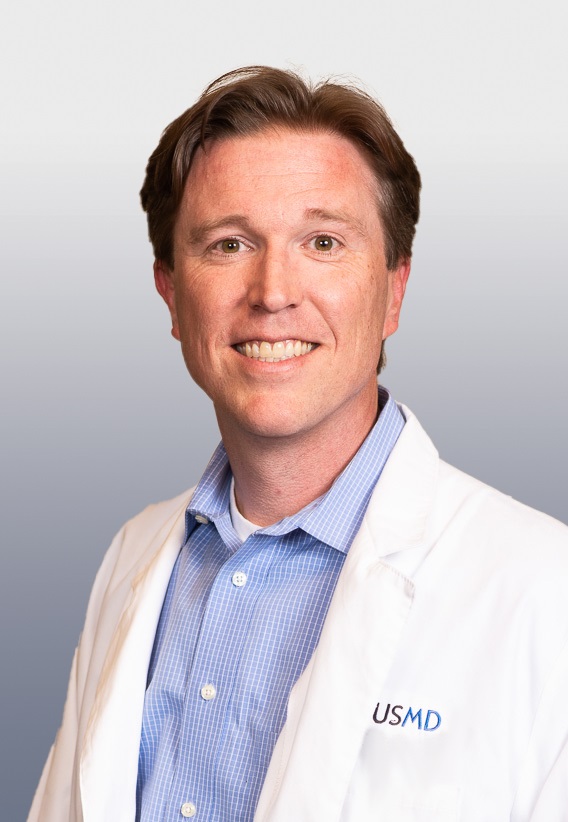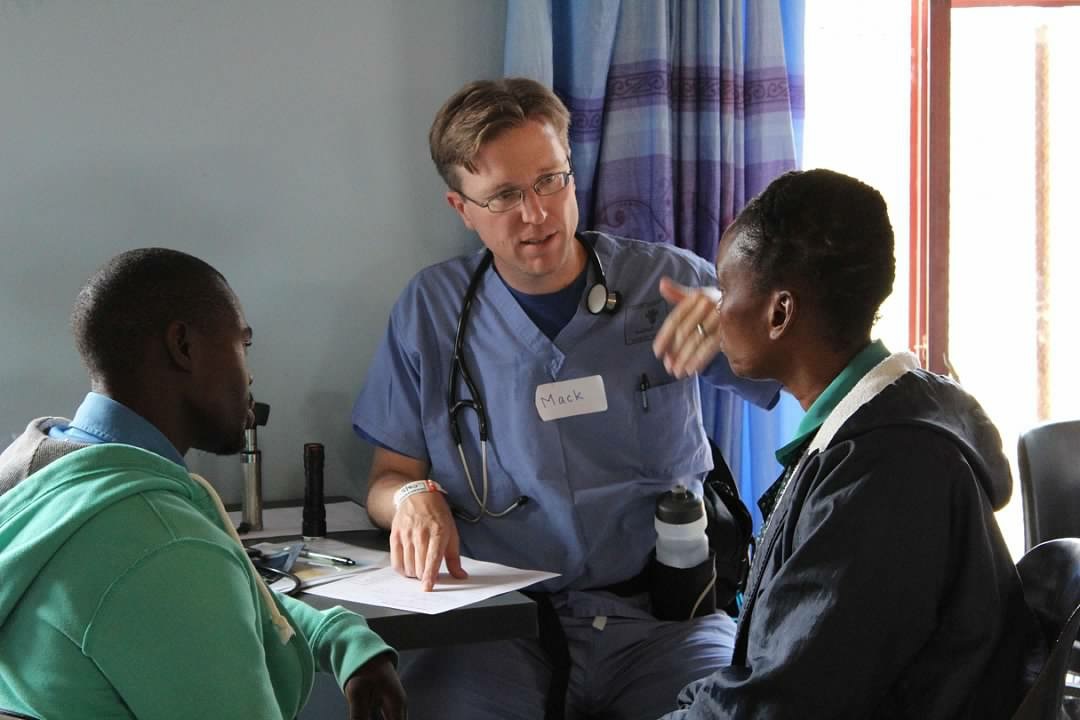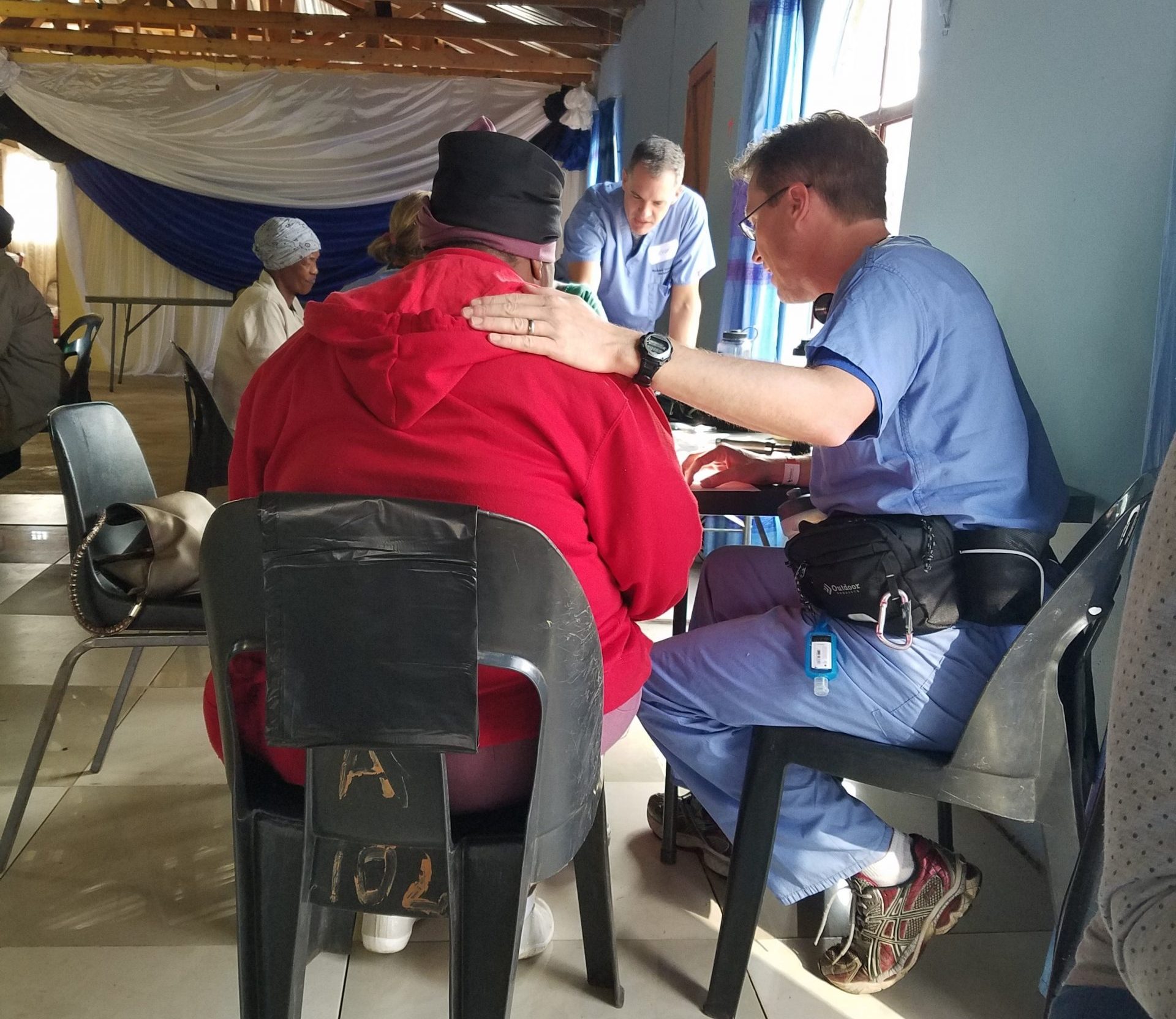How One PA Does It All: Leadership, Telemedicine, and Finding Balance
Seeks to Advance and Enhance Role of Advanced Practice Clinicians at Optum
December 15, 2020
By Jennifer Walker

Mack Grubb, PA-C, came to the PA profession for the same reasons that many others do: He was fascinated by the body and he had a desire to help people. But after practicing in internal medicine for nearly nine years, he realized he also wanted to impact patient care on a larger scale. In 2011, he took on a role with the Electronic Medical Record (EMR) development team at his clinic. Then, two years later, he also became the lead advanced practice clinician (APC) at USMD Health System in the Dallas-Fort Worth area of Texas.
Grubb talked to AAPA about the leadership pipeline for APCs; the role of telemedicine at USMD, especially now during COVID-19; and how he and his wife, Bethany Grubb, PA-C, balance their careers while being parents to five kids. Bethany currently serves as a director-at-large on AAPA’s board of directors.
Becoming a PA leader
Shortly after graduating from Austin College with degrees in psychology and biology, Grubb attended the PA program at the University of Texas (UT) Southwestern Medical Center in Dallas. He did one of his rotations in internal medicine at the Medical Clinic of North Texas (MCNT) then practiced full-time at the clinic from 2002 to 2011.
This is when Grubb became interested in affecting change on a broader level at his organization. “I had a desire to make things better, and to [be involved] in improving things from patient care to the workflow in the office,” he says
During this time, Grubb was participating in the clinic’s EMR committee. Leadership at the organization took notice of his ideas and offered him a position on the EMR team at MCNT. In this role, “I really provide insight and input into how users are going to interact with the EMR and help our IT team understand what they’re doing and how the EMR impacts the clinician,” he says.
[Wherever you want to go in your career, AAPA can help – join or renew your membership today]

Then, two years later, Grubb moved into a leadership role. This is when MCNT merged with USMD Health System, which encompasses two hospitals and about 50 primary care and specialty clinics in Texas. Grubb became the lead APC at USMD, a position in which he oversees close to 100 APCs. In this role, Grubb trains APCs about patient care and workflow, designs new compensation and incentive plans, weighs in on compliance and regulatory issues, educates leaders about the APC role and how it differs from the physician role, and brings the APC perspective to a variety of issues.
Grubb continued in this position when USMD was acquired by OptumCare, the care delivery arm of Optum, a subsidiary of UnitedHealth Group (UHG), in 2018. The OptumCare network includes 1,450 neighborhood clinics across 15 states.
Today, in addition to his other positions, Grubb continues to see patients one day a week. “That’s what I went to school for and why I got into medicine,” he says. “And while I love being able to impact a ton of patients indirectly in my other roles, I think it’s critical to help me understand how to help our patients and our other clinicians by actually doing it. So that’s the one thing I’ve held on to.”
The APC leadership pipeline
As lead APC at USMD, Grubb is part of the OptumCare APC Council, which sets priorities to advance and enhance the APC profession within the Optum system. The council, which includes about 23 representatives, one from each of OptumCare’s organizations that have a lead APC role, generally meets two or three times a year in person and once a month virtually to work on their three priorities. These include Scope of Practice, which focuses on making sure that APCs can practice to the full extent of their licenses; Community, which aims to create and foster connections among APCs; and Career Development, which focuses on creating APC leadership roles.

While USMD does not currently have a leadership pipeline for APCs, Grubb and the other members on the council are talking about how to create these opportunities within their own organizations. Grubb and his colleagues at USMD are also working with their HR team to develop these new roles. (For PAs interested in leadership, AAPA offers Leadership on Demand, a collection of courses on the topic for CME credits.)
As an example of the leadership possibilities for APCs, Grubb points to his own career path, which has included being one of the first two PAs to attend UHG’s Clinician Leader Executive Program (CLEP) in 2019. This is one of many programs created as part of UHG’s Center for Clinician Advancement (CfCA) to help clinicians become leaders in their fields. Offered in partnership with George Washington University, CLEP is a year-long immersive program that culminates in a capstone project, or, as Mary Jo Jerde, UHG senior vice president and the leader at CfCA, described it in a Johnson & Johnson article, “a ‘Shark Tank’ experience for participants to advance their project ideas.”
[Top-notch CME comes with AAPA membership – join or renew today]
For his capstone project, Grubb designed and created a Care Check initiative in which a team of patient care advocates, which includes medical assistants and nurses, reaches out to current patients who haven’t been to the USMD clinics in the previous 12 months by visiting their homes. The timing of this project proved to be fortuitous when COVID became widespread earlier this year and fewer patients were visiting the clinics. To serve this group, USMD worked quickly to implement this program along with its telemedicine initiative called MyHealthTeam.
Telemedicine as an extension of USMD services
Grubb’s Care Check initiative is one part of USMD’s telemedicine services. Through this initiative, teams outreach directly to patients at their homes, bringing tablets with them so they can connect patients virtually to clinicians. “The program allows patients to be connected with a provider to get care right then and there and ultimately to reconnect them with their home clinic,” he says.
Sometimes teams on these home visits go beyond connecting patients to medical care. Grubb tells a story about a 92-year-old patient in the South Dallas area who had wasp nests on her porch. When the team noticed this, they went to Walmart to get bug spray, came back to the patient’s house to treat the nests, and then returned the next day to reach out and connect her with care. The team then learned the patient was running low on food, so they used USMD’s patient charitable fund, which helps provide food to patients in need, to buy her a week’s worth of groceries. “She was struggling because of COVID and the lack of connection and food insecurity,” Grubb says. “And we’re able to take care of all that, in addition to providing her with basic care.”
USMD is also using telemedicine through its MyHealthTeam program, which is available at all of the organization’s clinics. “It’s just an extension [of our services] for our patients, as well as an inroad for a lot of new patients who have been unable to come in for various reasons or who are trying to seek care virtually to avoid being at risk or exposed to the coronavirus,” Grubb says. “It’s provided a bridge for the gap that COVID has created.”
APCs often provide care through the MyHealthTeam program. Although supervision requirements can be a barrier to PAs practicing through telemedicine, Grubb says this hasn’t been an issue at USMD. APCs are providing virtual care to patients who live in Texas, the state they are licensed in. “For telemedicine, we utilize the same supervisory framework as our in-person care to meet all the requirements and regulations,” Grubb says.
USMD has encountered other barriers to providing telemedicine services, including the expected technology issues. Perhaps most notable though is that clinicians have had to change their mindset in terms of how they provide care. “Usually, we’re laying hands on patients,” Grubb says. “[But through telemedicine], there are new ways that [we’re] trying to examine a patient or trying to get them to show [us] an area and stay engaged. So it’s a paradigm shift, but a good one. And I’d say generally, our providers have embraced it.”

Balancing Work and Family
Grubb has a busy home life with his wife, Bethany Grubb. The Grubbs met at the PA program at the UT Southwestern Medical Center, and now have five children, ages 13, 11, 9, and 7-year-old twins. Bethany practiced part-time at Platinum Dermatology Partners until recently, when she became an assistant professor at her alma mater, UT Southwestern. They have managed their careers and their home lives by making family their first priority. “If we see work really impacting the family, then we’ll dial it back or we won’t move down that road,” Grubb says. “And we just divide and conquer.”
Being in the same profession, the Grubbs can also understand each other’s goals as PAs. “[Bethany] is invested in the PA profession and gets it from that standpoint,” Grubb says. ““If I have something at work, then she says, ‘Great, go for it,’ and [I do] the same thing for her. It all wouldn’t be possible without her support.”
Jennifer Walker is a freelance writer in Baltimore, MD. Contact Jennifer at [email protected].
You May Also Like:
Q&A with PA Leader Clair Kuriakose
Bianca Belcher: 4 Things to Know About Becoming a Leader
PA Kristi Gindlesperger’s Path to Leadership
Thank you for reading AAPA’s News Central
You have 2 articles left this month. Create a free account to read more stories, or become a member for more access to exclusive benefits! Already have an account? Log in.



